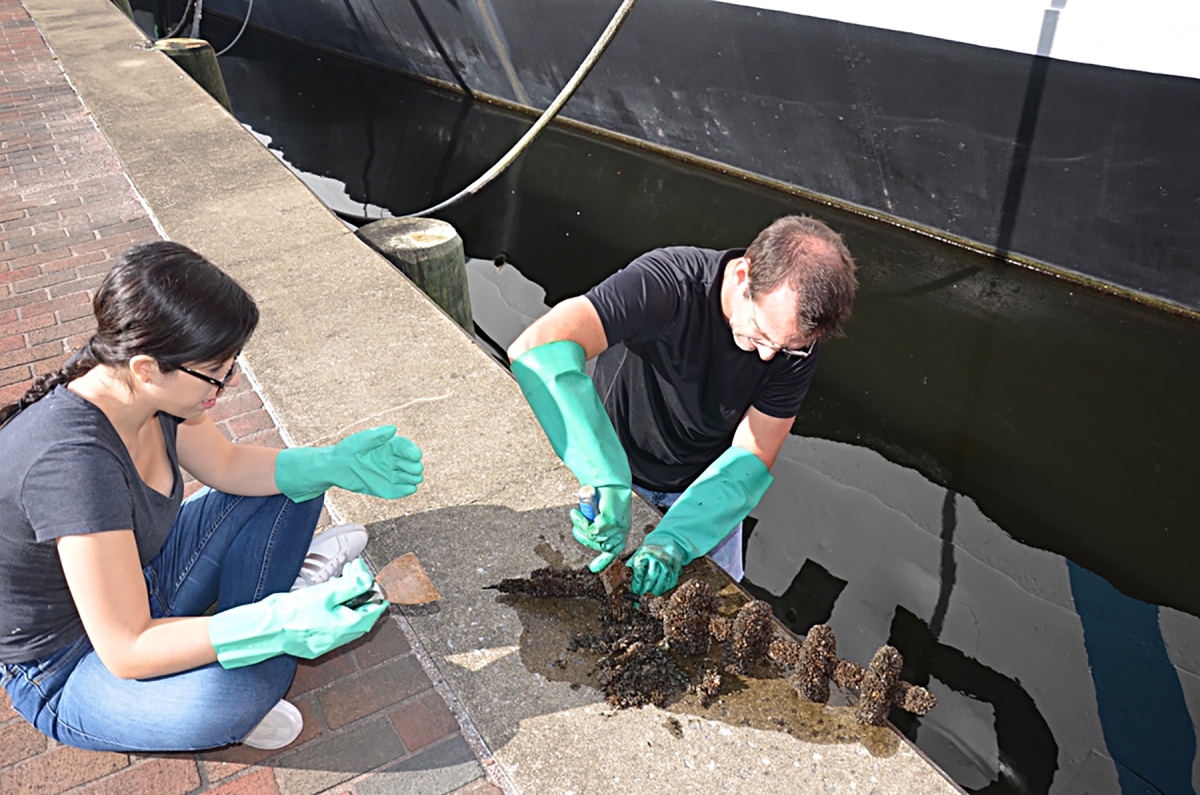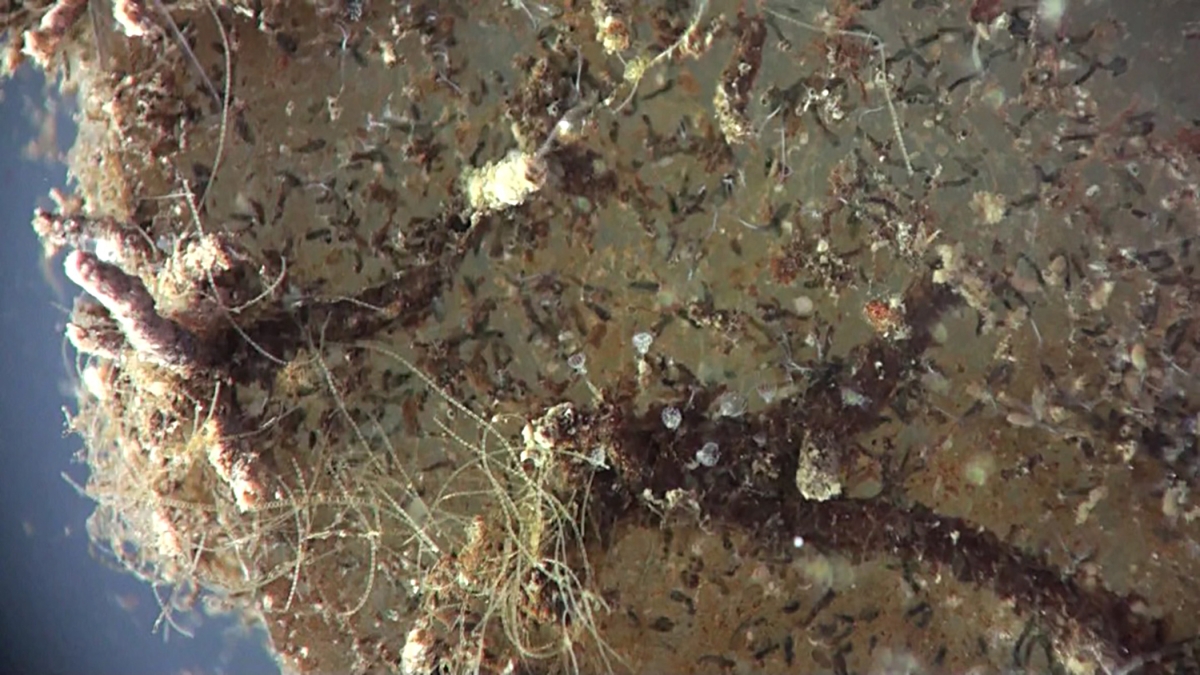Biofilms and Biodiversity Introduction
The Chesapeake Bay is the largest most productive estuary in the United States providing habitat for some 2,700 species of plants and animals. The health of the Bay is important in maintaining this high level of biodiversity — the variety of species located within an ecosystem.
In this interactive website, you will learn about the formation of biofilms and how to set up a field-based aquatic biodiversity experiment, calculate measures of biodiversity, and evaluate virtual biofilms and biodiversity cultures grown on discs suspended in Baltimore's Inner Harbor.

These discs are used to monitor biodiversity in the Inner Harbor, and to learn about the organisms that frequent this body of water throughout the year and if there are any patterns of colonization on the discs. The biofilm discs are observed and analyzed by groups of teachers and students for colonization and species diversity.
What Are Biofilm Communities?
Biofilms are a hot topic in microbiology today. Scientists are studying the ways bacterial colonies form these slimy layers, which can be resistant to antibiotics and the immune system, or critically important in the formation of the human microbiome and our health. These vast areas of study will help inform how biofilm layers form, adhere to surfaces, how they can be prevented, and how they can be encouraged.

Biofilms moved to the forefront of microbiology after a 1994 case that involved the infection of hundreds of asthmatics. It was found that all the asthmatics used the same inhalant contaminated with a bacterium known as Pseudomonas aeruginosa. This bacterium was able to survive the routine disinfection of the inhalant during manufacturing by forming a biofilm comprised of many colonies. The contaminated inhalers contained pieces of the biofilm that were transported directly to the lung tissue by the asthmatics. In the lung tissue the Pseudomonas biofilm was able to flourish. One hundred people died from the biofilm infection, a dramatic example of the danger posed by some bacterial biofilms.
Biofilms can be both detrimental and beneficial in the environment and the human body. The human gut microbiome is the hottest of all these topics today and research has shown evidence that our health is closely tied to a healthy gut community of bacteria. It is now well known that there are far more microbial cells in and on our body than the total of our own human cells. Estimates are that there are 10 times more microbial cells making us a type of super-organism and an excellent example of symbiosis.
The common denominator is that all biofilms are comprised of a primary layer of bacteria that provide an attractive environment for other bacteria and larger organisms. Biofilm communities found on the hull of a ship consist of large organisms like barnacles, mussels, and a host of other zooplankton and phytoplankton. These biofilms slow a ship and are expensive to remove and prevent. Current methods to prevent biofilm formation on ships include a wide variety of toxic marine paints. However, these paints tend to wear off and biofilms which are resistant form on them without regard to the toxins.



